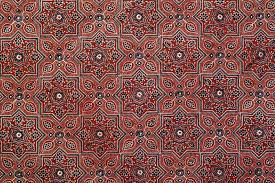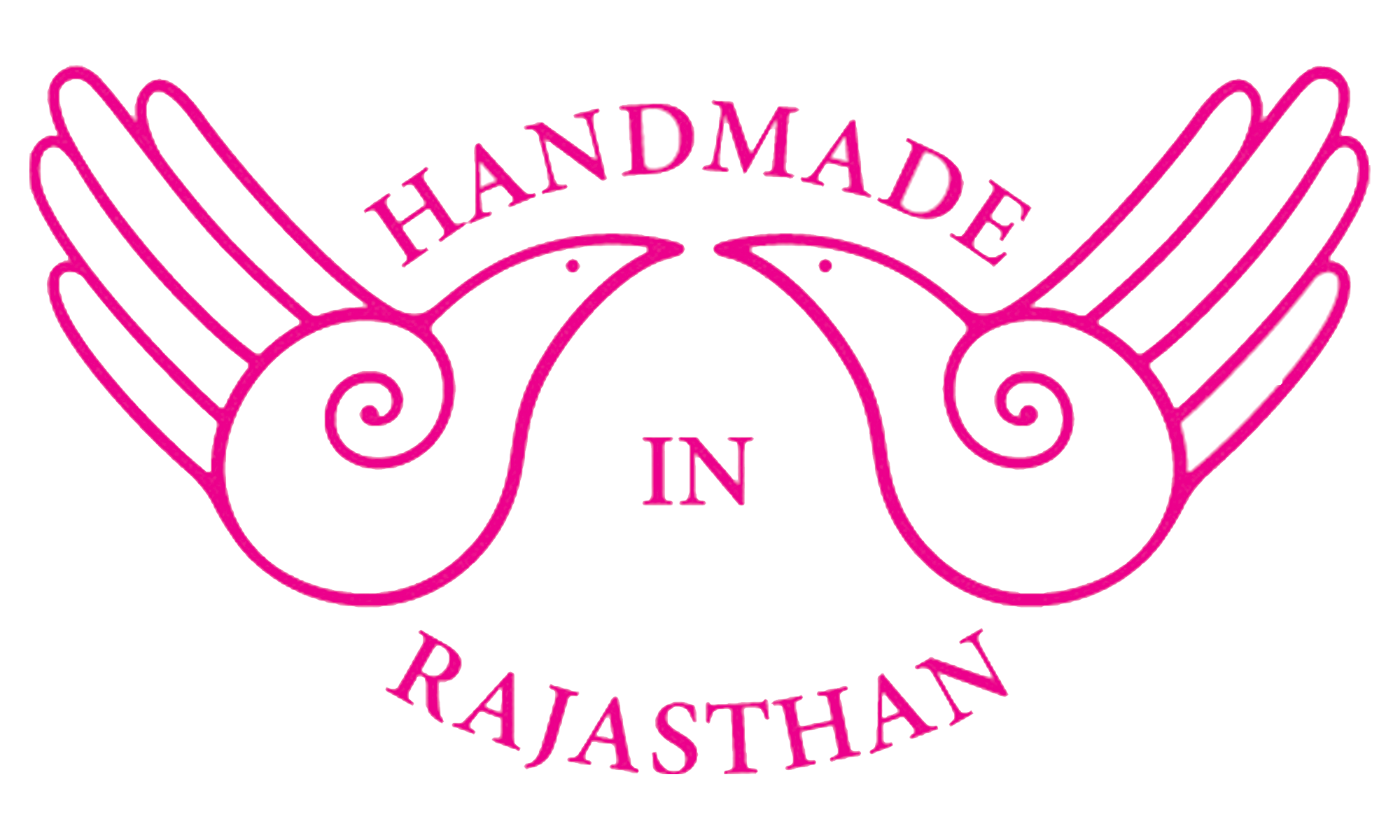- Home
- About US
- Art and Craft
- Artisans
- Master Crafts Persons
- Supporting Institutions
- News and Events
- Schemes
- Contact us
- Contact

Ajrak is a name given to a unique form of blockprinted shawls and tiles found in Sindh,Pakistan; Kutch, Gujarat; and Barmer, Rajasthan in India.Ajrak craft products are made with natural dyes. The entire production of the products include both vegetable dyes and mineral dyes. Indigo is key dye.
Traditionally, Ajrak is the name of a block printed cloth with deep crimson red and indigo blue background, bearing symmetrical patterns with interspersed unprinted sparkling white motifs.The term “Ajrak”, may be derived from “Azrak”, meaning blue in Arabic, as blue happens to be the one of the principal colours in Ajrak printing.
The Ajrak is usually about 2.5-3meters in length. The authentic Ajrak is printed on both sides by a method called resist printing. The printing is done by hand with hand carved wooden blocks. Several different blocks are used to give the characteristic repeated patterning. Making the blocks is a considerable challenge since the pattern has to synchronize perfectly with the whole of the Ajrak as well as cover various areas against dye.
The Ajrak print is employed within a grid, the repetitive pattern creating a web-like design or the central jaal. Apart from this jaal, border designs are also employed in the fabric. These borders are aligned both vertically and horizontally and frame the central field, distinguishing one ajrak from another. The lateral ends are printed using a wider, double margin in order to differentiate the layouts of borders.
Ajarak printing is a long process involving many stages of printing and washing the fabric over and over again with various natural dyes and mordants such as harda, lime, alizarin, indigo and even camel dung. The technique of resist printing allows exclusive absorption of a dye in the desired areas only and prevents absorption on the areas intended to be left uncolored.The raw fabric in full length is pulled exhaustively through the river many times, scoured, beaten, steamed, mordanted, printed with resist mud pastes from the banks of the river, covered with powdered camel dung and ground rice husks; dyed in deep madder and indigo.Unlike other processes of printing on cloth, where the colour is applied directly to the cloth, in Ajrak block printing, the fabric is first printed with a resist paste and then dyed. The process is repeated again and again with different kinds of dyes, to eventually achieve the final pattern in the deep red and blue hues. This gradual process is also very time consuming, as the longer an artisan waits before beginning the next step, the more vivid the final print becomes. Thus, the entire process can take upto two weeks resulting in the creation of the beautiful eye-catching patterns of the Ajrak.
This craft has been on a decline because modern, quicker methods of printing and bright chemical dyes are replacing the natural, muted colours and this slow and careful process of printing this traditional textile. But with efforts of the master craftsmen and increasing awareness among the urban people, this crafts is slowly gaining momentum. Because of being an environment friendly ancient craft, Ajrak, is slowly gaining visibility among the cosmopolitan.

